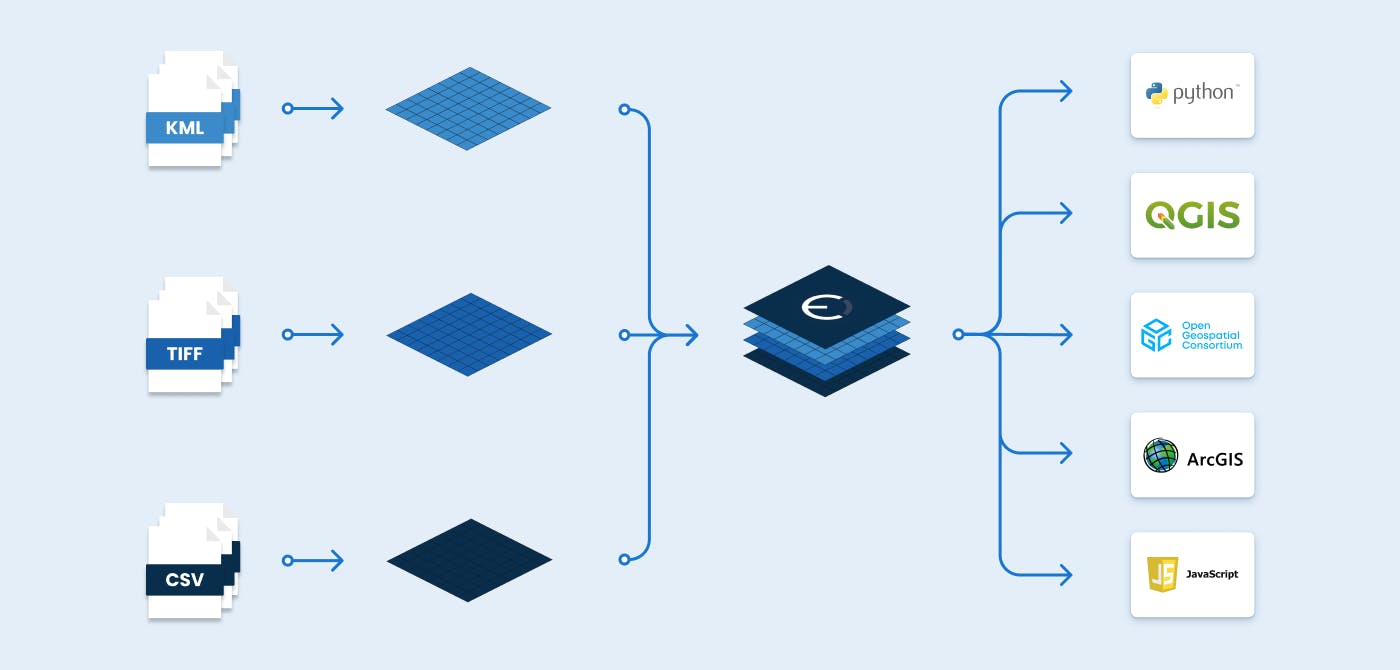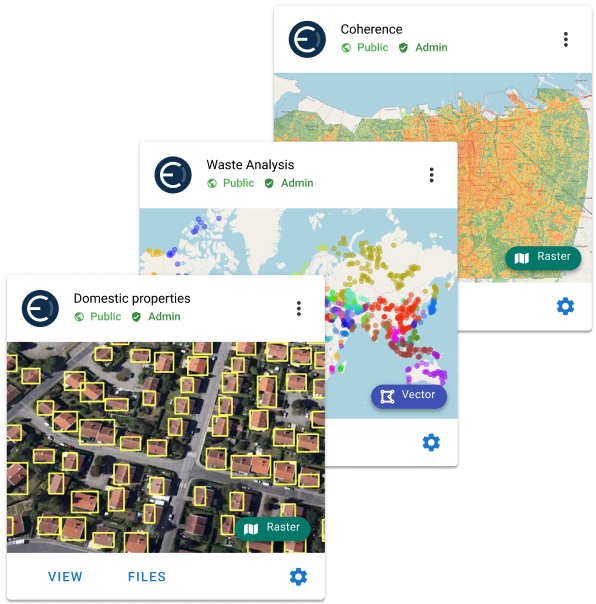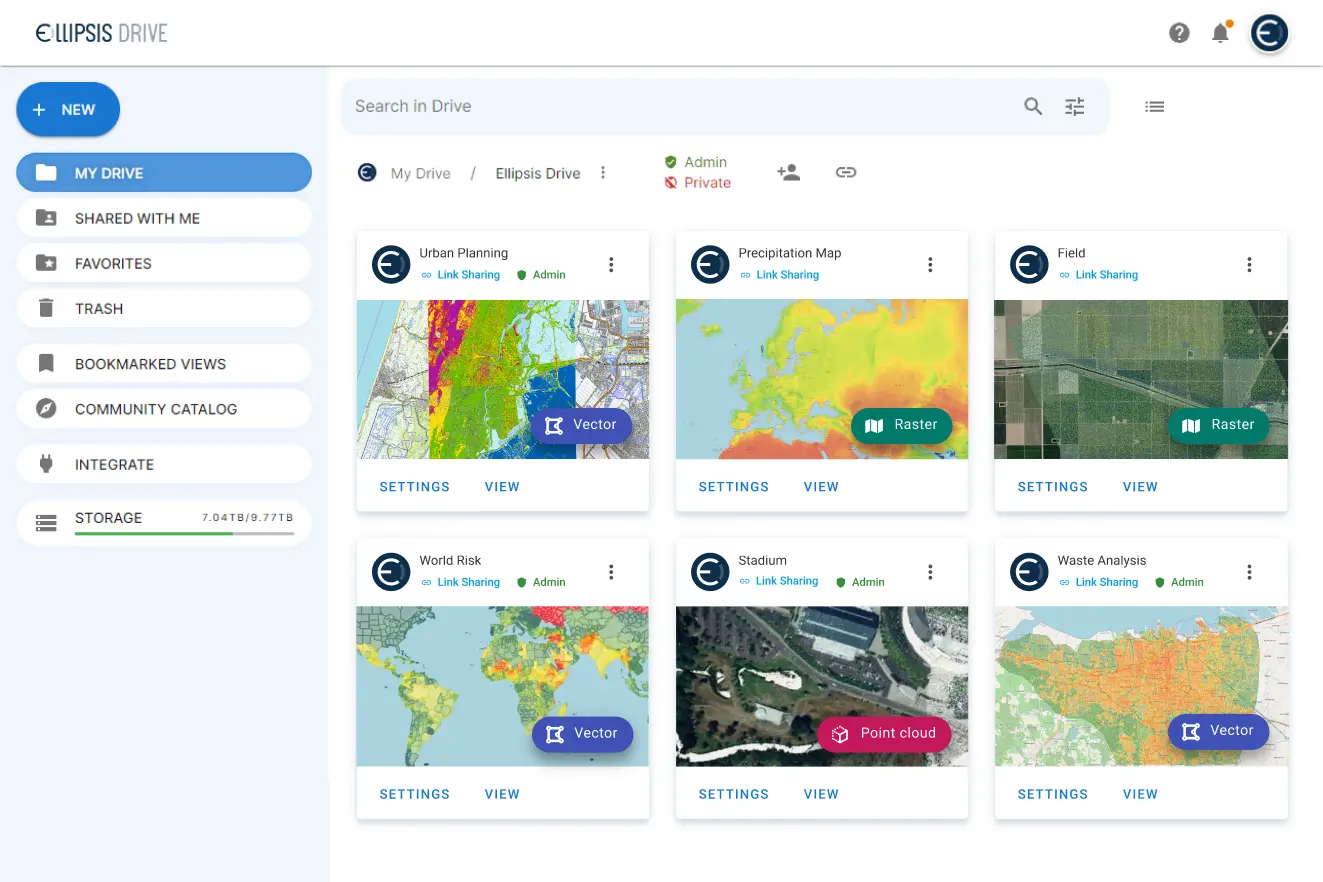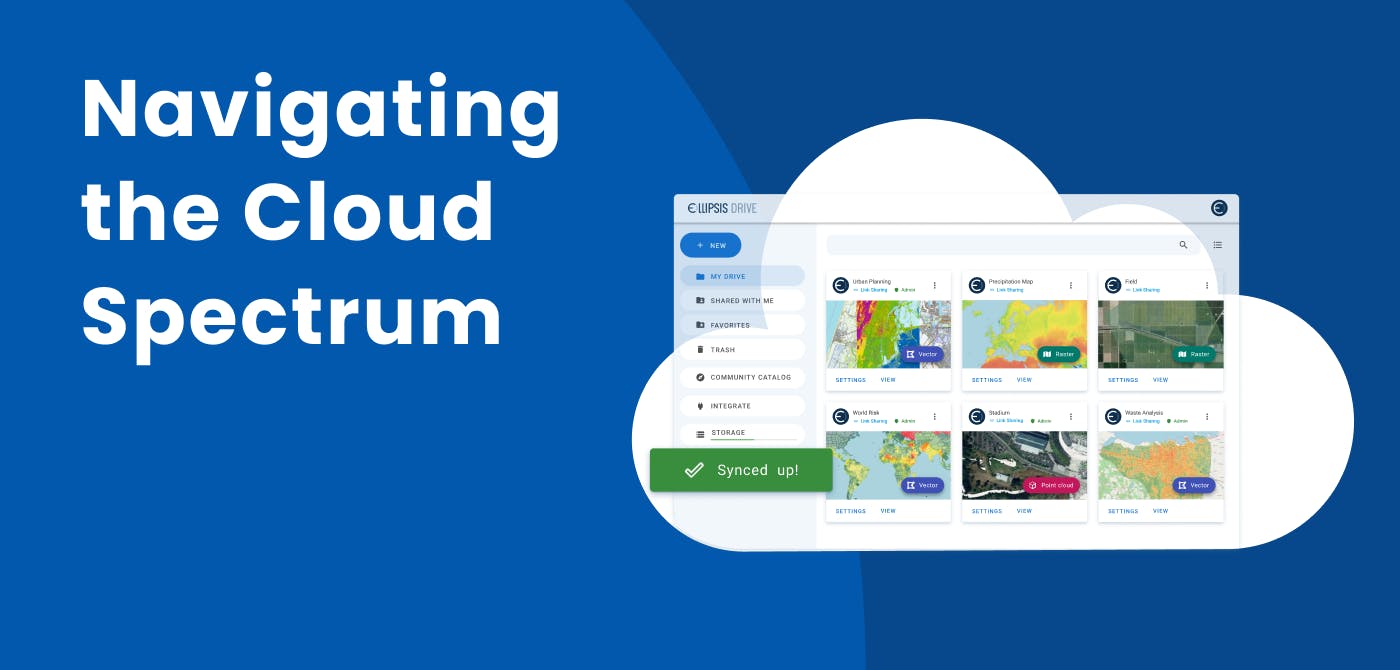GIS
A New Era of Spatial Data Management

Contents
The Status Quo of Data Infrastructure
Modern data infrastructures have made significant strides with the rise of cloud-based solutions, data lakes, and lakehouses. However, many of these data warehouses and data lakehouses are designed with the assumption that data is primarily tabular. As a consequence of this incomplete assumption, many challenges arise while handling specialized data types, particularly spatial data such as raster datasets. Raster data is force-fitted into these tabular structures, which are not optimized for spatial analysis.
The root of the problem lies in the way in which datasets are stored. In theory, spatial data—whether it’s raster or vector data—should fit well into modern data infrastructures, given its structured nature. However, most data lakehouses, by design, expect data in tabular formats like CSV, Parquet, or Delta Lake.
So as a compromise, raster data is treated as either unstructured or forced into the above formats which causes it to lose its spatial relevance. This often results in inefficiencies when attempting to apply spatial operations such as transformations, aggregations, and analyses, all of which are essential for extracting meaningful insights from geospatial datasets.
So the trick to cracking this puzzle of making datasets homogenous—and thus maximizing their potential—lies in fixing the data storage technique. In the following section, we will shed light on how Ellipsis Drive’s patented data storage methodology does justice to raster datasets and opens up countless use cases and applications.
Ellipsis Drive’s Unique Storage Method
Ellipsis Drive is a map native engine that stores data in layers. These offer structured storage that is native to raster data and vector data. Once raw spatial files are uploaded to Ellipsis Drive, a virtual layer is created on top of these files. This virtual layer provides an abstract interface so that the data can be used performantly and interoperably regardless of the initial input.
At the core of our virtual layer lies a powerful and efficient storage solution: tile pyramid archives. These archives, built on a patented system, are specifically designed to store raster data within a highly organized and structured data lakehouse.
As new spatial data is added to the underlying data lake, the virtual data lakehouse dynamically populates itself based on the content it detects. This seamless automation ensures that your data remains organized and ready for analysis without manual input. The ingestion engine oversees several critical tasks to keep everything running smoothly:
- File Detection: New files within the data lake are automatically identified.
- Indexing & Metadata Parsing: Essential data is indexed and metadata is parsed for easy access and understanding.
- Tiling: Data is efficiently segmented into tiles for optimal storage and retrieval.
- Precomputed Projections: Projections are precomputed, allowing for faster processing and analysis.
This automated process not only enhances efficiency but also ensures that your spatial data is ready to be utilized in the most optimized format without any manual effort.
Applications: Simplifying Data Access and Analysis with Ellipsis Map Engine
The integration of raster and vector data within Ellipsis Drive makes it incredibly simple to leverage this content across applications, business intelligence (BI) tools, and data analytics platforms. Since the Ellipsis Drive lakehouse is purpose-built to handle such data types, it offers high-performance visualization and computation without requiring any manual effort from the user. To streamline data analytics, we've developed the Ellipsis Map Engine, a robust tool that allows users to easily execute algorithms written in Python. The Map Engine supports both map-reduce operations and layer-to-layer mappings, running these processes in a massively parallel manner for lightning-fast results.
Key Stakeholders: Empowering Developers, Data Scientists, and Data Providers
For app developers and data scientists, Ellipsis Map Engine significantly simplifies workflows by providing seamless access to the data they need via their preferred endpoint. These professionals can offload many of the more complex tasks to the server-side, freeing them from the burden of implementing these functions manually. This results in faster development cycles and more efficient use of resources.
Interestingly, the Ellipsis Map Engine also eases the load for data providers. These stakeholders, who are often tasked with supporting a broad range of access requirements across the spatial data landscape, benefit from the platform's streamlined architecture. By centralizing and automating the heavy lifting, Ellipsis ensures that data providers can deliver content efficiently while reducing the strain of managing diverse access points.
Conclusion: A New Era of Spatial Data Management
The challenges of managing spatial data within traditional data infrastructures are undeniable. From forced conversions of raster data into tabular formats to inefficient spatial operations, the need for a more sophisticated and tailored solution has never been clearer. Ellipsis Drive’s innovative approach to data storage and analysis is exactly what the spatial data landscape needs. By reimagining how raster and vector data are stored, processed, and accessed, Ellipsis Drive empowers businesses to fully unlock the potential of their geospatial datasets.
With its automated data ingestion and tile pyramid archives, Ellipsis Drive provides a seamless, high-performance environment for spatial data without manual intervention. The Ellipsis Map Engine further enhances this ecosystem by simplifying complex data analysis tasks and enabling massive parallel computation, making it easier than ever for developers, data scientists, and data providers to leverage spatial data in real-time.
Would you like to test the Ellipsis Map Engine? Get in touch with our sales team today!
Liked what you read?

Subscribe to our monthly newsletter to receive the latest blogs, news and updates.
Take the Ellipsis Drive tour
in less than 2 minutes'
- A step-by-step guide on how to activate your geospatial data
- Become familiar with our user-friendly interface & design
- View your data integration options

Related Articles

Navigating the Cloud Spectrum: From Generalist to Specialized, and the Perfect Middle Ground
The modern cloud ecosystem spans a wide spectrum of offerings, from general-purpose infrastructure to highly specialized platforms built for domain-specific tasks. At one end, generalist clouds provi
5 min read

Unlocking the Potential of Data: Comparing Tabular and Non-Tabular Protocols
The world of data is a complex landscape and each year, the complexity of that landscape grows exponentially. A combination of new data capturing technology, data processing technology and demands fo
6 min read

Understanding the importance of GIS in Urban Planning
Cities are robust places filled with life, but before it becomes a cosmopolitan paradise, plenty of ever-evolving complexities are happening behind the scenes to bridge the gaps and create an area spa
3 min read